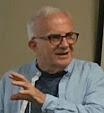On the other hand, we cooked our food and heated our home with fire. We shoveled coal into the roaring giant of a stove in our cellar. We learned how to start campfires with flint, steel and tinder. We made them blaze for story-telling, body-warmth and entertainment, and we turned them into glowing coals to cook the most amazing meals. My father said that sometimes he set controlled fires to fight wild fires – a concept that is still tinged (if not singed) with mystery for me.
Later I learned that our sun is a seething ball of fire, and beneath the crust of our planet lie fiery volcanoes, simmering. Wires in our house carry a kind of controlled and pulsating fire; too many plugs in a socket once made that unforgettable. Under the hood of our car an engine harnesses a sequence of fiery explosions to bring us to the park. Even my body burns calories in a continuous metabolic fire.
Fire can be released from rocks (coal, uranium), water, wind, oil, wood, or even corn. Controlled fire propels bullets, planes and rockets through space at unimaginable speeds. With it we build canyoned cities, cruise ships, and congested highways. Without it, war as we know it would cease upon the earth. Without it, nights and all enclosed spaces would be invariably and impenetrably dark.
Fire has always been associated with the Sacred. There is little wonder that fire is one of the four (or five or seven) basic elements of antiquity. No fire, no life. We are a long way from the Beltane Fires of pagan practice, but we still light candles, use incense and announce a pope’s election with smoke. Why did the writer of Acts describe the arrival of the Holy Spirit as manifested by “tongues of fire”? Why have we retained fire as the very symbol of Pentecost – the third of our three greatest Feasts?
Does the Holy Spirit reveal a dangerous side of God? Krister Stendahl, former Bishop of the Church of Sweden and Harvard Dean, once compared religion itself to nuclear energy – an immensely powerful kind of fire. Like nuclear energy, he said, religion can do an enormous amount of good when respected and properly channeled. But if misused or treated casually, it can be awesome in its destructiveness. He said this before 9/11 and the radical simple-minded extremism of today.
When affirming belief in the Holy Spirit, our ancient creed heralds “the Lord and Giver of Life.” The Holy Spirit brings liberating transformation; She is the source of all hope. The Holy Spirit is “God-as-change-agent.” Pentecost reminds us that God, like fire, is above us and beneath us, around us and within us. She is the One who brings warmth and possibility. She is the Source of life itself, and accessible to everyone one equally. She is the Holy Comforter.
 But Pentecost also reveals the awesome, fiery, unpredictable and passionate side of God. Our invocation “Come Holy Spirit, Come!” may never be said easily, indifferently or with over-familiarity. For me, this prayer will always be tinged with fear and trembling. I learned long ago never to play with fire.
But Pentecost also reveals the awesome, fiery, unpredictable and passionate side of God. Our invocation “Come Holy Spirit, Come!” may never be said easily, indifferently or with over-familiarity. For me, this prayer will always be tinged with fear and trembling. I learned long ago never to play with fire. (The first "Fire" photo is by Jackie Keepers, from her facebook site. The second "Fire" photo is by Ernest von Rosen, www.amgmedia.com)














No comments:
Post a Comment